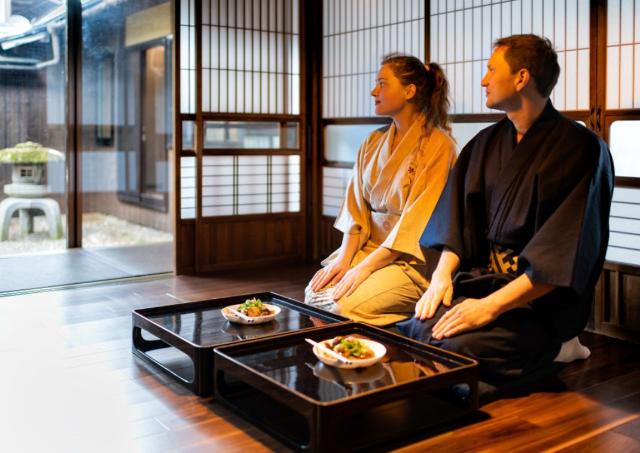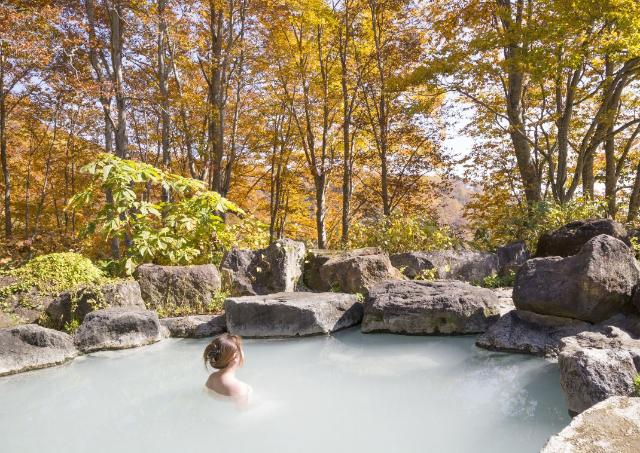Kyoto Hotel Tax to Increase up to 900% in 2026: What Changes, Who Pays, and How to Save

Madrid, Spain
The Kyoto City Council approved this ordinance in March 2025, with final confirmation from Japan’s Ministry of Internal Affairs and Communications coming in October 2025. This represents the first major revision since the accommodation tax was originally introduced in October 2018, marking nearly eight years of stable rates before this dramatic adjustment.
City officials have been explicit about their rationale: tourists must bear the cost of countermeasures against overtourism. As Kyoto continues attracting millions of international visitors to iconic sites like the Golden Pavilion and Fushimi Inari Shrine, the city faces unprecedented challenges managing crowds while preserving its cultural heritage.
Key Takeaways
- Kyoto’s accommodation tax will increase dramatically from March 1, 2026, with luxury stays facing up to ¥10,000 (56,50€) per person, per night
- Current tax rates of ¥200-¥1,000 per night will be restructured, with the highest tier representing a tenfold increase
- The new tax structure targets luxury accommodations costing ¥100,000 (565€) or more per night while maintaining lower rates for budget travellers
- School groups and certified childcare event participants remain exempt from all tax charges
- Tax revenue is projected to nearly double from ¥5.9 billion to ¥12.6 billion annually to fund infrastructure and combat overtourism
What is the Kyoto Accommodation Tax
The Kyoto accommodation tax is a per-person, per-night levy charged to guests staying at various lodging establishments throughout the city. Originally implemented in October 2018, this tax applies to hotels, inns, guesthouses, traditional ryokan, and shared lodgings operated under Japan’s Hotel and Inn Business Act, as well as private accommodations registered under the Private Lodging Business Act.
The tax is collected directly by accommodation providers at either check-in or check-out (decided at the discretion of the accommodation), meaning guests pay the fee when settling their hotel bill rather than paying separately to the city.
Local authorities designed the accommodation tax specifically to generate additional revenue for tourism-related infrastructure improvements and crowd management measures. Unlike general municipal taxes, these funds are earmarked for addressing tourism’s impact on local infrastructure and enhancing the city’s appeal as an international cultural tourist city.
The legal framework supporting Kyoto’s accommodation tax required approval from Japan’s Ministry of Internal Affairs and Communications, which oversees municipal taxation policies. This approval process ensures tax policies align with national regulations and don’t create unfair competitive disadvantages between cities.
New Tax Rates Starting March 1, 2026
The restructured Kyoto hotel tax creates five distinct pricing tiers, replacing the previous three-tier system.
Here is a breakdown of the tax rates’ change for accommodation price per night:
Under ¥6,000 (‹€33.90)
Current: ¥200 (€1.13)
From 1 Mar 2026: No change
¥6,000–¥19,999 (€33.90–€112.99)
Current: ¥200 (€1.13)
From 1 Mar 2026: ¥400 (€2.26)
¥20,000–¥49,999 (€113–€282.49)
Current: ¥500 (€2.83)
From 1 Mar 2026: ¥1,000 (€5.65)
¥50,000–¥99,999 (€284–€564)
Current: ¥1,000 (€5.65)
From 1 Mar 2026: ¥4,000 (€22.60)
¥100,000 and above (≥€565)
Current: ¥1,000 (€5.65)
From 1 Mar 2026: ¥10,000 (€56.50)
These changes will significantly impact luxury accommodations like the Park Hyatt Kyoto and the upcoming Imperial Hotel, Kyoto, which is scheduled to open in March 2026 - coincidentally the same month the new tax rates take effect.
For perspective, a couple staying at an ultra-luxury accommodation for one week would pay ¥140,000 (approximately $910) in accommodation tax alone, beyond their room charges. This represents a massive shift from the previous maximum of ¥14,000 for the same stay.
Who Pays and Who is Exempt
The accommodation tax applies to all guests aged 12 and older staying in Kyoto accommodations. This age threshold means families travelling with young children face a reduced tax, as children under 12 don´t pay these charges.
Several exemptions remain in place, most notably for school trips. Students and teachers participating in educational excursions receive full exemption from accommodation taxes, recognizing the educational value of exposing young people to Kyoto’s historical and cultural significance.
Certified childcare event participants and their chaperones also qualify for exemptions. These provisions ensure educational and youth-focused travel retains affordable access to Kyoto’s cultural resources.
Kyoto’s Tax Compared to Other Japanese Cities
Kyoto’s new accommodation tax structure positions the city with Japan’s highest hotel taxes, surpassing all other municipalities currently implementing similar measures.
Tokyo pioneered accommodation taxes in Japan, implementing its system in 2002. Tokyo’s current rates range from ¥100 to ¥200 per person per night, making Kyoto’s new maximum rates fifty times higher than Tokyo’s peak.
Osaka introduced its accommodation tax in 2017, charging between ¥100 and ¥300 per person per night depending on accommodation cost. Even Osaka’s highest rate represents just 3% of Kyoto’s new luxury tier tax.
Currently, Niseko in Hokkaido holds the record for Japan’s highest accommodation tax at ¥2,000 per person per night. Kyoto’s new ¥10,000 maximum rate will quintuple this previous national high, establishing an entirely new precedent for municipal tourism taxation.
As of April 2025, thirteen municipalities across Japan have implemented lodging taxes, with nearly fifty additional local authorities considering similar measures. However, none approach the scale of Kyoto’s planned increases.
Why Kyoto is Increasing the Hotel Tax
Kyoto’s decision to dramatically increase accommodation taxes stems from mounting challenges managing unprecedented tourism volumes while preserving the city’s cultural integrity and residents’ quality of life.
The city faces severe overtourism at iconic destinations like the Golden Pavilion, where crowds often prevent visitors from experiencing the contemplative atmosphere these sites were designed to provide. Fushimi Inari Shrine’s famous vermilion torii gates attract massive crowds that strain narrow pathways originally built for small numbers of pilgrims.
Japan attracted record numbers of foreign tourists in recent years, with over 35 million international visitors in 2024. The government’s ambitious goal of reaching 60 million tourists by 2030 requires better infrastructure and crowd management systems, particularly in historically significant destinations like Kyoto.
How Tax Revenue Will Be Used
The projected revenue increase from ¥5.9 billion to ¥12.6 billion annually will fund comprehensive initiatives addressing tourism’s impact on Kyoto’s infrastructure and cultural preservation needs.
Public Infrastructure Improvements: Enhanced revenue allows for expanding public transportation capacity, widening pavements in high-traffic areas, improving wayfinding systems, and upgrading public facilities that face heavy tourist use. The city plans infrastructure improvements specifically designed to handle larger visitor volumes.
Crowd Control Measures: Funding will support implementing reservation systems at popular attractions, creating timed entry slots, deploying additional staff for crowd management, and developing alternative viewing areas to distribute tourist flows more evenly across the city.
Cultural Heritage Protection: Increased visitor volumes accelerate wear and tear on centuries-old structures, gardens, and artifacts. Additional revenue enables more frequent maintenance, specialised conservation efforts, and protective measures preventing damage from touching, photography, and environmental factors exacerbated by large crowds.
Resident-Tourist Relations: Programmes aimed at reducing friction between tourists and locals will receive funding, including educational initiatives teaching visitors about appropriate behaviour in traditional neighbourhoods and cultural sites.
The city also plans to enhance Kyoto’s appeal as an international cultural tourist city by promoting deeper cultural engagement rather than surface-level sightseeing, potentially attracting higher-value visitors who stay longer and engage more meaningfully with local culture.
Why Kyoto’s higher lodging tax can upgrade your experience
Our Product Manager, Jeremy Batt, comments: “I understand why some headlines sound dramatic, but this isn’t a “gotcha” fee. Kyoto’s accommodation tax has been implemented for things travellers can experience and benefit from: more frequent buses on scenic corridors, cleaner streets, better wayfinding, and care for cultural assets. That means more comfortable transport, better lanes, and clearer info when you’re hopping between temples. Although hotels in Kyoto will be a little more expensive, if you want a cheaper stay, you can consider staying in nearby Otsu, Osaka, Kobe or Nara."
Here are the journey times for reference:
Otsu: 9–10 min JR from Kyoto
Osaka: 23–30 min JR; 12–15 min by Shinkansen to Shin-Osaka
Kobe: 51 min JR to Sannomiya; 32 min by Shinkansen to Shin-Kobe
Nara: 44–48 min on JR Miyakoji Rapid
You'll still see the iconic sights by day, then retreat to quieter bases for the evening, where you can find some great local restaurants and bars, away from the tourist scene.
"To spread the love beyond the usual hotspots, we point guests to beautiful, less-talked-about corners of Kyoto that benefit from those very investments: Shinnyodo Temple near the Philosopher’s Path (great in autumn), Honen-in (a great detour with seasonal sand art), and the northern valleys of Kurama & Kibune (a personal favourite of mine with wonderful temples and hiking)" - adds Jeremy Batt.
Frequently Asked Questions
When exactly does the new Kyoto hotel tax take effect and will it apply to bookings made before March 2026?
The new accommodation tax rates take effect on March 1, 2026, and will apply to all stays beginning on or after that date, regardless of when the booking was made. Travellers who booked accommodations before the announcement but are staying after March 1, 2026, will pay the new higher rates. Hotels are expected to communicate these changes to guests with existing reservations to prevent confusion at check-out.
How is the accommodation tax calculated for group bookings or family rooms with multiple occupants?
The tax is calculated per person per night, meaning it multiplies based on the number of guests regardless of room configuration. A family of four in one room paying ¥80,000 per night would each pay ¥4,000 in accommodation tax, totalling ¥16,000 per night in taxes alone. Children under 12 years old are exempt from the tax.
Are there any other fees or taxes visitors should be aware of beyond the accommodation tax in Kyoto?
The accommodation tax is separate from Japan’s national consumption tax (currently 10%), and any service charges hotels may apply. Some hotels charge additional resort fees or service charges.
Can the accommodation tax be paid in advance or is it always collected at the hotel during check-in/check-out?
The accommodation tax must be paid directly to the hotel at check-in/check-out and cannot be prepaid separately or included in advance online bookings. Hotels collect the tax in Japanese yen cash or by credit card along with other charges.
Plan your trip with us
Get in touch with one of our travel consultants, they are ready to help you create the trip you always dreamed of.
Online Consultation
You may also be interested in these articles
“Is someone different at age 18 or 60? I believe one stays the same.” -Hayao Miyazaki
Here at Japanspecialist, we have some experience with tourism in Japan, and we can guess what’s on most of your bucket lists: experiencing a ryokan, the Japanese term […]
Tattoos have long been a taboo in Japan, largely due to their historical association with the yakuza. However, with the right information and a bit of planning, it’s […]



